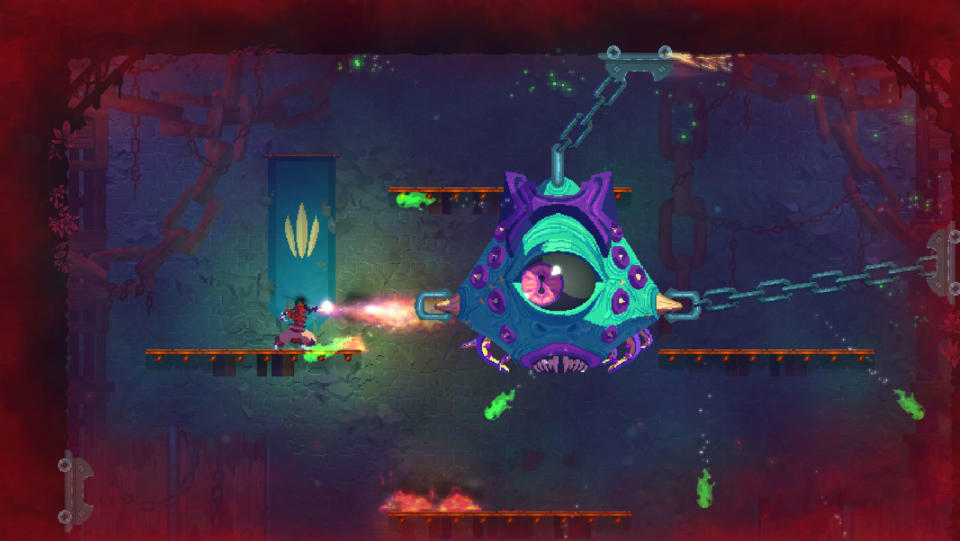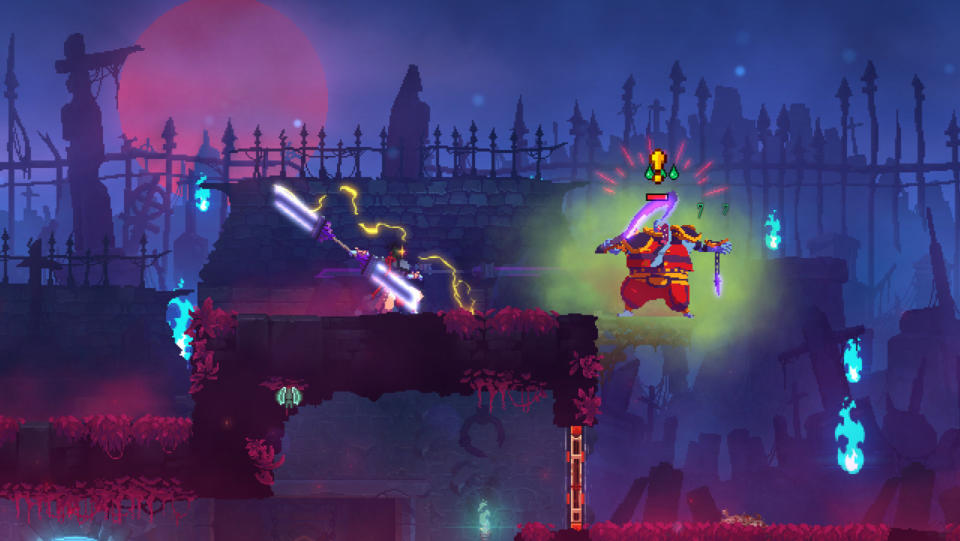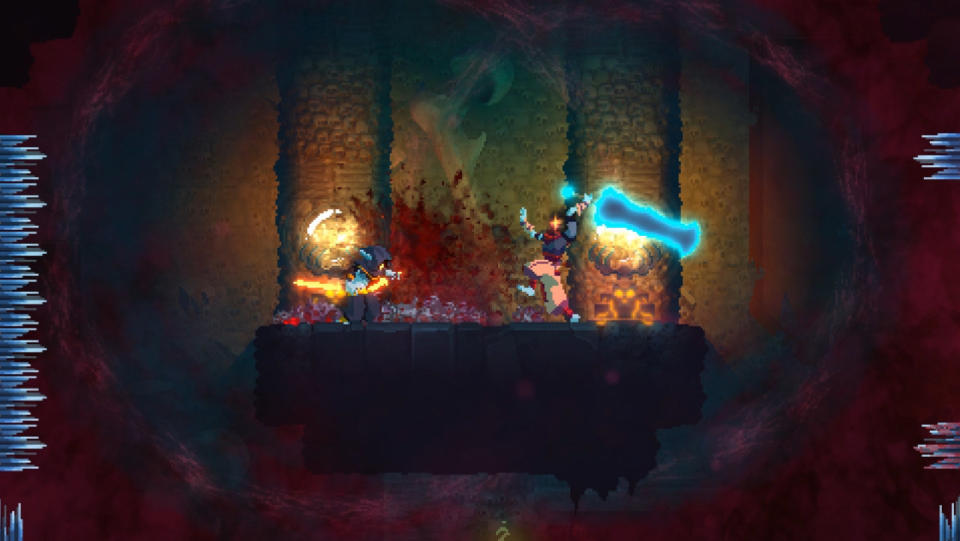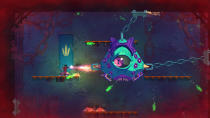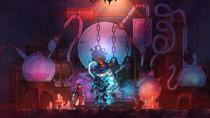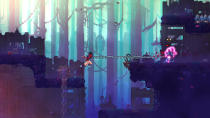The rich and mysterious story buried in 'Dead Cells'
Hack, slash and ponder the nature of existence.
There's a story in Dead Cells. Motion Twin's glossy, pixelated platformer is known for offering brutal battles and rich customization options in a sprawling, neon castle ravaged by bloodthirsty beasts, but there's also a plotline lurking below the constant threat of death. Far below. Like, so far that it even surprised the people who created Dead Cells.
"The story and the lore in this game was really, like, chaotic. Really chaotic," lead designer Sébastien Bénard said.
"Really, really a mess," marketing manager Steve Filby added.
"At the beginning we did not want to have any kind of story, at least not too much," Bénard continued. "We knew that the loop between dying and getting back into action should be as short as possible and lore was just getting in the way."
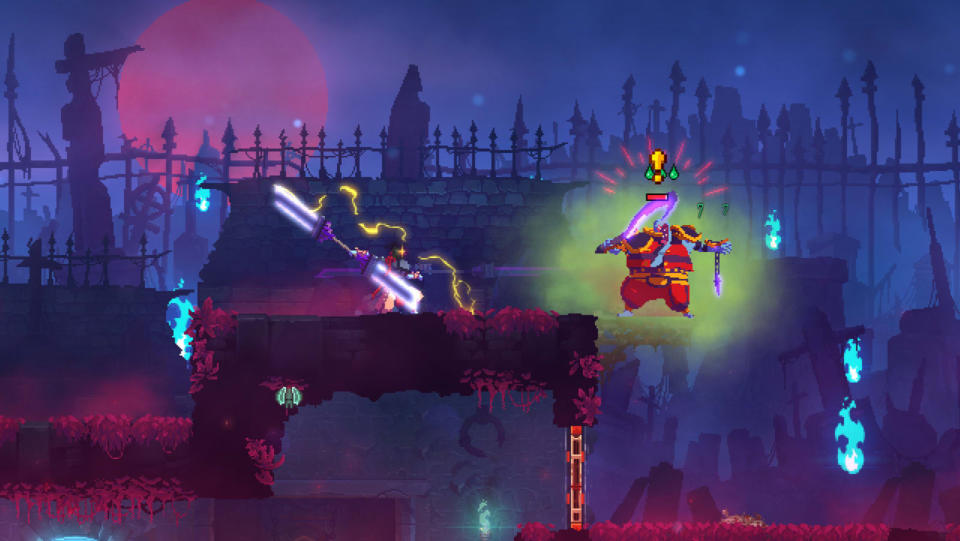
Dead Cells was built to kill its players in a frenzied, procedurally generated and unending cycle, which makes inserting a story tricky. The game is a roguelike with a modified permadeath system, which means when a player bites the dust, long stretches of recent progress are lost and any items that haven't been properly stored or traded in disappear into the ether. Players start back at the Prisoner's Cells and tackle the dungeon again. And again. And again.
Motion Twin developers didn't want to shoehorn loading-screen lore into a game that was really all about action and punishment. Besides, no one on the team would call themselves a writer. They continued to build out the game, adding bits of fantasy and naming characters with no grander goal in mind. At least for a little while.
"After a few months in Early Access, it was becoming a little bit more obvious that we wanted to tell something because the universe was compelling for most players, the world of the game, so it would be a shame not to do something from that," Bénard said. "Just to tell a story, a light one. But it finally became a quite complicated one."

Motion Twin has a narrative document now, patched together in half French and half English, but it tells the entire story of Dead Cells. The game itself is speckled with story beats, both accidental and purposeful, and the narrative is vague. Part of that is due to the game's nonlinear format, which naturally conceals certain details from players. The other part is Motion Twin intentionally keeping things vague, building a tone for the universe and introducing characters so players can put the pieces together themselves.
Essentially, Bénard said, fans have gotten it right so far. According to the most recent theories and in the most barebones terms, the plot of Dead Cells goes something like this:
A terrible Malaise is unleashed on the kingdom, killing citizens and driving them mad, and the Alchemist blamed for the plague is locked far away in a castle. There, the Alchemist discovers what seems to be a cure for the Malaise, using cells as the catalyst. The king, meanwhile, is frantically locking up and killing suspected infected people, losing his grip on reality and humanity. The Hand of the King and the Giant turn on the king and the Alchemist (who is also The Collector) and steal cells for themselves, becoming extra powerful. The King is granted the ability to leave his body, but he loses his memories in the process -- and he becomes the protagonist, a headless, unkillable fighter. Oh, and there's a Time Keeper watching over the entire thing, messing with the fabric of reality.
Phew. That's only the most basic outline of what's going on in Dead Cells, at least as it appears to players. There are more details to come, though. The first bit of free DLC for the game, Rise of the Giant, only hit PC on March 28th and it should land on consoles this summer. Rise of the Giant adds new levels, bosses and a handful of player-requested features, including 50 fresh skins for fans to choose from, with no microtransactions in sight.

That's all great for Steam players, but the gap between the console and PC release dates is a small point of contention in the community. Motion Twin is acutely aware of the frustration, but they're also only human. After three years of full-tilt, public-facing development, the team is taking a break.
"This is the reality of production," Filby said. "We would like to get it out as soon as humanly possible, but everybody is taking like two weeks of holidays over the next month, and so the time to try and organize around that, that's a bit late. And then we've got to go into certification, we've got all the translations to do."
Before Dead Cells, Motion Twin built games for the web: quick, cute and addictive browser-based things like Monster Motel, Arkadeo and Teacher Story. Dead Cells represents its first major push into a new brand of game development, but the creators are still trying to retain their connections to the community.
"When you make web games you do have to get involved in the forums on any kind of social network actually," Bénard said. "So that's something that we were used to. ... We knew that it's the kind of game that is not easy to balance. You have to spend quite a lot of time balancing the game, making sure that everything feels right and nothing's too powerful and so on. So we knew that talking to the community and getting their feedback would be a crucial part of this development."

One of the most-requested features Motion Twin sees is the addition of multiplayer, and it's something they're seriously considering.
"For now, we have ideas," Bénard said. "We have been talking about that for a lot of time, but for now we don't really feel that it's multiplayer-oriented. But that's something that could change. Because it's really all about having any stupid idea, and suddenly it feels right and suddenly it feels OK."
Any stupid idea, like having an undead king seek redemption in a goo-filled fantasy land where giant skeletons, biological warfare and time travel run rampant. That all feels perfectly OK for Dead Cells.

